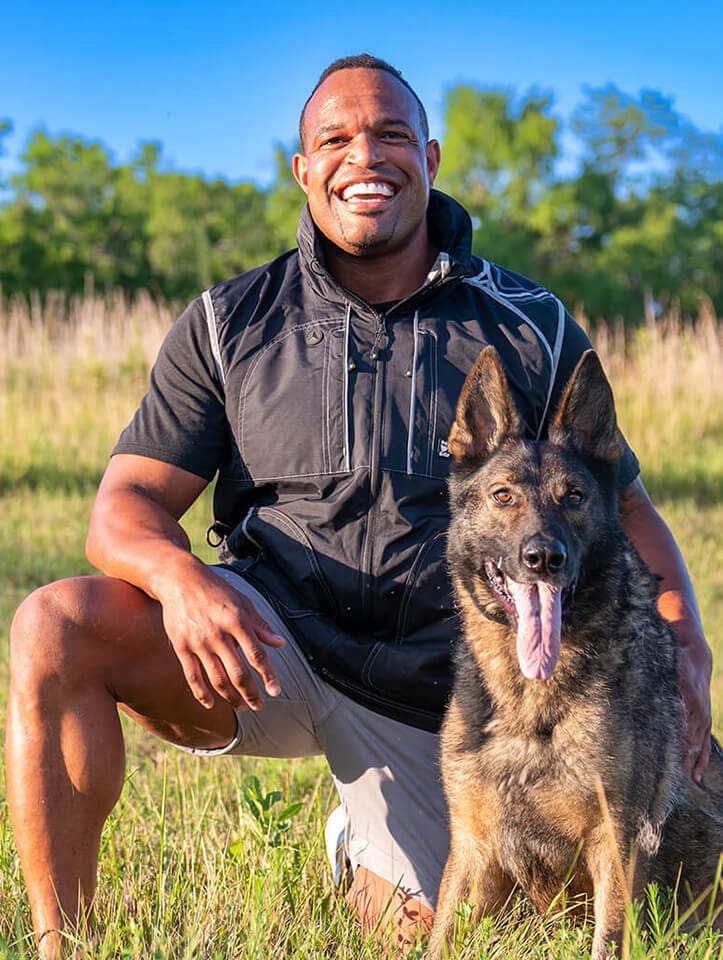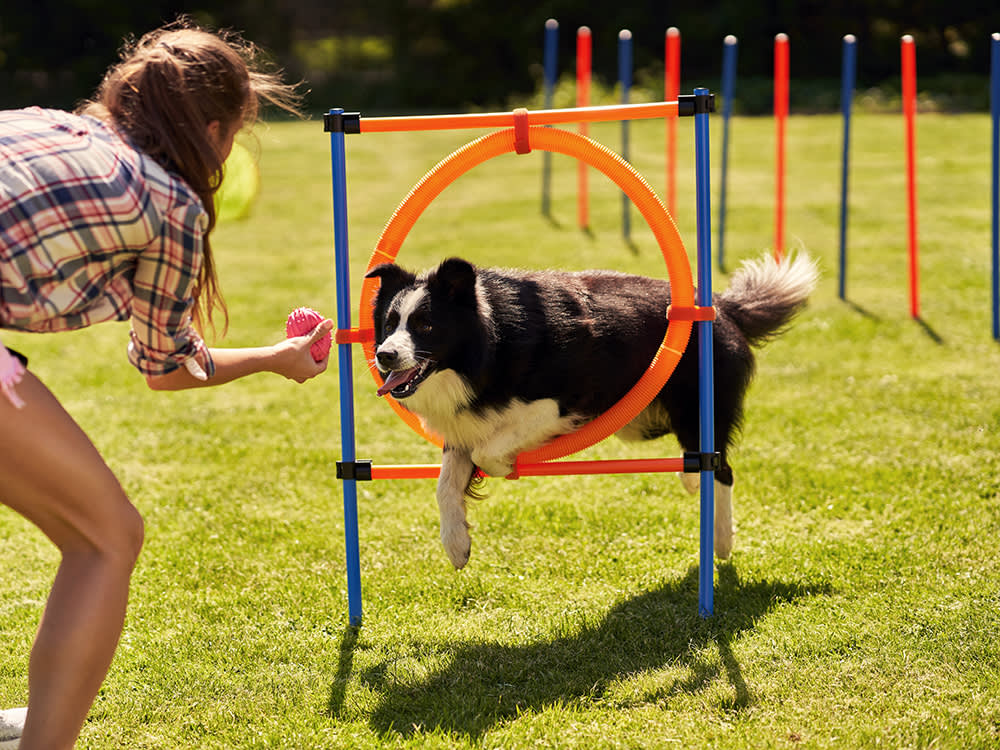Transform Your Dog's Behavior with These Proven Dog Training Methods
Transform Your Dog's Behavior with These Proven Dog Training Methods
Blog Article
Beginner's Guide to Successful Pet Training at Home
Successfully training a pet in the house calls for a nuanced understanding of canine actions and efficient communication methods. Developing clear training goals, making use of top quality rewards, and maintaining uniformity across member of the family are crucial components. Integrating training right into day-to-day routines can enhance both interaction and retention. However, numerous novice instructors experience challenges that may impede progression. To browse these complexities properly, it's necessary to check out numerous key elements that can change your method and bring about a harmonious connection with your pet dog. What fundamental concepts should every newbie grip to make sure success?
Understanding Canine Habits
Comprehending pet dog habits is necessary for reliable training and promoting an unified connection between humans and their canine companions. Pet dogs interact mainly through body language, vocalizations, and facial expressions, making it vital for owners to translate these signals precisely. Identifying behaviors such as tail wagging, growling, or cowering can supply understandings right into a dog's emotional state and intentions.

Common behavior issues, such as aggressiveness, anxiousness, or too much barking, frequently come from misunderstandings or unmet requirements. Observing and dealing with these concerns without delay can protect against escalation and make sure a favorable training experience. By promoting a deep understanding of dog habits, proprietors can customize their training techniques to match their canine buddies, eventually causing a well-behaved and happy animal.
Vital Educating Tools
A well-equipped training area can substantially enhance the effectiveness of canine training in your home. Crucial training tools make sure that both the dog and the trainer can take part in productive sessions that promote learning and bonding.

Buying a sturdy chain and a comfortable, well-fitting collar or harness is crucial for security and control. These devices assist establish limits and make sure the canine remains safe during training. Additionally, a marked training area, free from disturbances, aids concentration for both the pet and the fitness instructor.
Training help such as training pads, cones, or agility devices can also improve the experience by introducing range and obstacles. Finally, having a note pad or digital application for tracking progression can be indispensable, allowing you to note successes and locations for improvement. Using these necessary tools will certainly create a positive training environment and lay the foundation for reliable understanding.
Producing an Educating Regimen
Developing a constant training regimen is important for effective canine training in the house. A well-structured regular not only assists in strengthening preferred behaviors however additionally provides your dog with a complacency and predictability. To create a reliable training regular, begin by recognizing specific training objectives, such as standard great site commands, chain walking, or house-breaking.
Pick an assigned time every day for training sessions, ideally when your pet is responsive and alert. Sessions should be short, about 5 to 15 mins, to keep emphasis and prevent exhaustion. Consistency in timing and setting will certainly improve your canine's understanding experience.
Integrate training into day-to-day tasks to strengthen abilities. Practice commands during strolls or mealtime, which incorporates finding out right into all-natural routines. In addition, remain adaptable and adjust the routine as needed, suiting your pet dog's energy degrees and state of mind.
Favorable Reinforcement Methods
Favorable support strategies are basic to reliable pet dog training, advertising desired habits through benefits as opposed to punishment. This technique uses favorable stimulations, such as deals with, praise, or play, to urge dogs to duplicate certain activities. The keystone of this strategy is timing; rewards need to be offered instantly complying with the desired habits to create a clear organization.
When carrying out favorable support, it is necessary to pick rewards that are inspiring for your pet dog. High-value treats, such as small items of poultry or cheese, can be specifically efficient throughout training sessions. Additionally, differing the rewards can preserve your dog's rate of interest and excitement.
Start with straightforward commands, like "rest" or "stay," and gradually progress to much more complicated jobs. Consistency is crucial; make certain that all member of the family make use of the same commands and reward systems to stay clear of complication.
Additionally, it is vital to continue to be patient and avoid disappointment. Canines, like human beings, discover at their very own speed. By cultivating a helpful training atmosphere through favorable support, you can improve your canine's knowing experience while reinforcing the bond between you and your fuzzy buddy, laying the groundwork for successful training outcomes.
Typical Educating Challenges
While educating a pet in your home can be a satisfying experience, it commonly includes a set of common obstacles that can evaluate both perseverance and uniformity. One prevalent issue is diversion. Pets might come to be easily sidetracked by noises, activities, and even fragrances in their atmosphere, making it hard to maintain their emphasis throughout training sessions.
An additional obstacle is inconsistency in commands and reinforcement. If member of the family use various signs or rewards, it can confuse the dog and impede progress. Developing a unified approach is essential for effective communication.
Additionally, pets can experience stress or stress and anxiety, particularly if they do not recognize what is expected of them. This can result in unwanted actions, such as chewing or barking.
Lastly, the timing of reinforcement is crucial (Dog training). Delayed benefits can reduce the effectiveness of positive support, as pets might stop working to connect the actions with the benefit
Getting rid of these challenges calls for commitment, clear communication, and an organized training plan. Recognizing and resolving these typical obstacles will lead the way for an extra successful and pleasurable training experience at home.
Verdict
In final thought, effective dog training in your home necessitates a detailed understanding of canine behavior and reliable interaction techniques. By developing clear training goals and using top notch treats together with favorable reinforcement, the training procedure becomes a lot more gratifying for both the fitness instructor and the pet. Flexibility, persistence, and consistency are important elements that help with understanding. Ultimately, integrating training into everyday regimens enhances the bond between pet dog and proprietor, making the experience both delightful and productive.
Developing a regular training regimen is essential for effective dog training at home.Favorable support strategies are basic to reliable pet see this site training, promoting preferred habits through rewards instead than penalty (Dog training). By cultivating a helpful training setting via favorable reinforcement, you can boost your pet's understanding experience while enhancing the bond in between you and your furry companion, laying the foundation for successful training results
In verdict, effective canine news training at home necessitates an extensive understanding of canine habits and effective interaction approaches. By establishing clear training goals and utilizing high-quality deals with together with favorable support, the training procedure becomes extra satisfying for both the pet dog and the fitness instructor.
Report this page